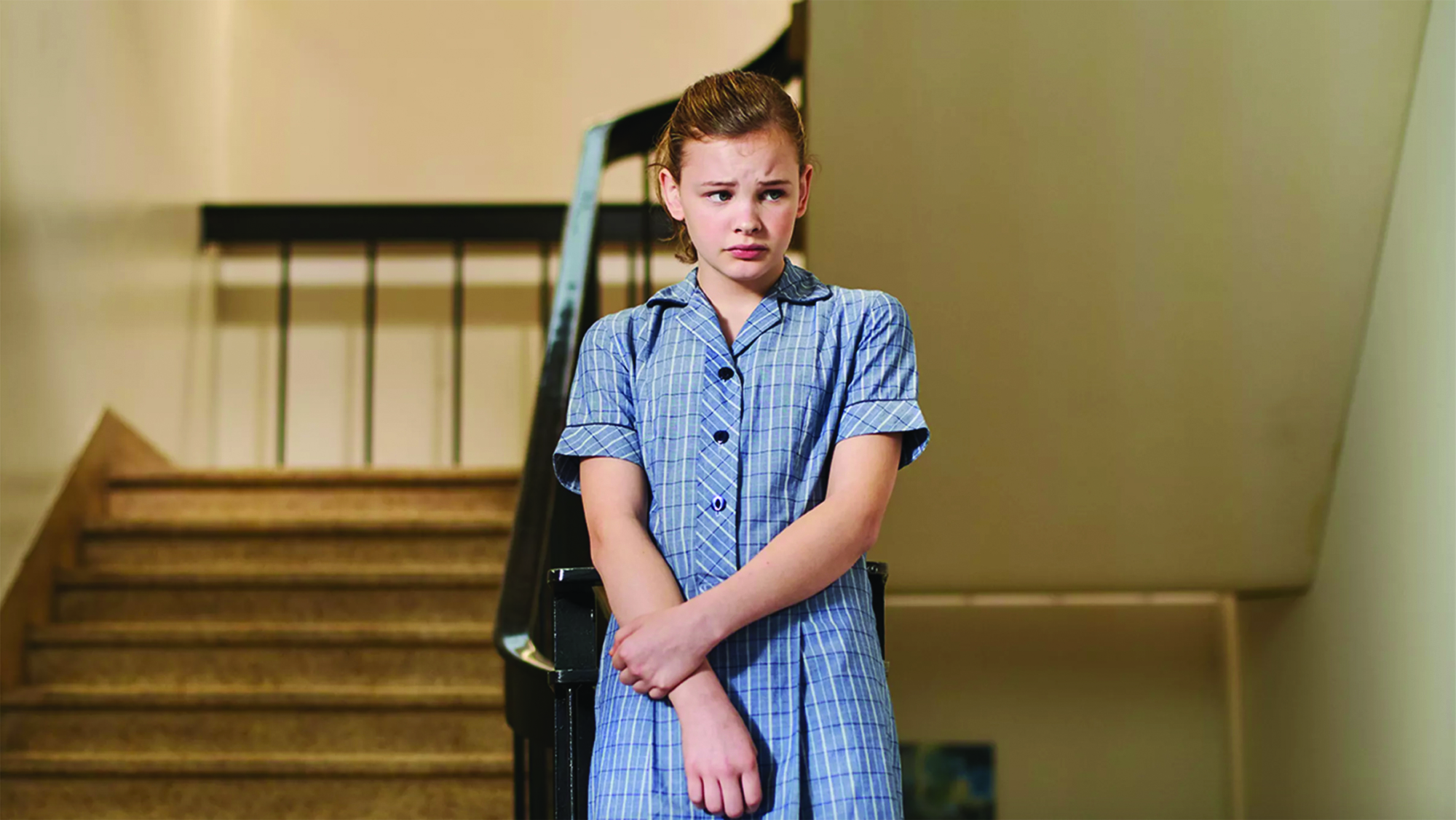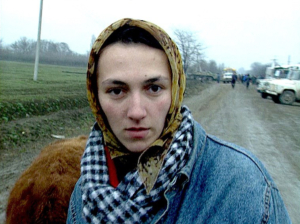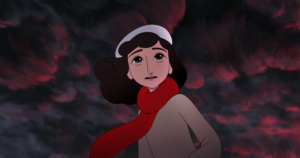The idea of representation has long been a rallying cry for cultural diversity, equity and inclusion. Appeals for increased space for the marginalised, displaced and excluded can be increasingly heard across a range of fields, ranging from the classroom[1]See Seth Gershenson, Michael Hansen & Constance A Lindsay, Teacher Diversity and Student Success: Why Racial Representation Matters in the Classroom, Harvard Education Publishing Group, Cambridge, MA, 2021. to the workplace,[2]See Laura Morgan Roberts, Anthony J Mayo & David A Thomas (eds), Race, Work, and Leadership: New Perspectives on the Black Experience, Harvard Business School Publishing Corporation, Boston, MA, 2019. via the body politic[3]Luigi Curini, Willy Jou & Vincenzo Memoli, Why Policy Representation Matters: The Consequences of Ideological Proximity Between Citizens and Their Governments, Routledge, London and New York, 2015. and embodied lifeworld experiences.[4]As psychologist Joanna Brooks notes, the concept of ‘lifeworld’ derives from philosophy and refers to ‘the world of lived experience inhabited by us as conscious beings, and incorporating the way in which phenomena (events, objects, emotions) appear to us in our conscious experience or everyday life’. See Brooks, ‘Learning from the “Lifeworld”’, The Psychologist, vol. 28, no. 8, 2015, p. 642. This is a response to the feeling among many culturally diverse groups of people of being underrepresented or misrepresented within their own society. Such value-laden representations are part of the normative web in which all our beliefs, practices and identities are spun and interwoven.
These differential representations encompass attitudes towards race, colour, religion, sex, sexuality, gender identity, ethnicity, professions, age, body types, disability and social class. Calls for more diverse representation therefore herald resistance to the default cultural settings: white, male, heterosexual, cisgender and middle-class. Equally, seeing the world through the lens of a particular race, sex, sexuality, gender identity or class simultaneously reveals society’s fault lines: racist, sexist, homophobic, transphobic or classist.[5]See Anette Hoffmann & Esther Peeren (eds), Representation Matters: (Re)Articulating Collective Identities in a Postcolonial World, Brill, Leiden, Netherlands, 2010. Given film and television’s complicity in defaulting to pervasive cultural standards or social scripts,[6]Social scripts are internalised representations directing patterns of thought and behaviour in specific situations. These ‘scripts’ directly relate to prescribed social roles and norms – that is, the way the same person might take on a different role (mother, daughter, sister, employee, boss, customer, etc.) and think and act differently in a given situation. screen creators are continually been called upon to re-evaluate their own value orientations.[7]See, for example, Media Diversity Australia, ‘Who Gets to Tell Australian Stories?’, 26 August 2020, available at <https://apo.org.au/node/307889>; and ‘Inclusion in the Film Industry’, British Film Institute website, <https://www.bfi.org.uk/inclusion-film-industry>, both accessed 16 March 2021.
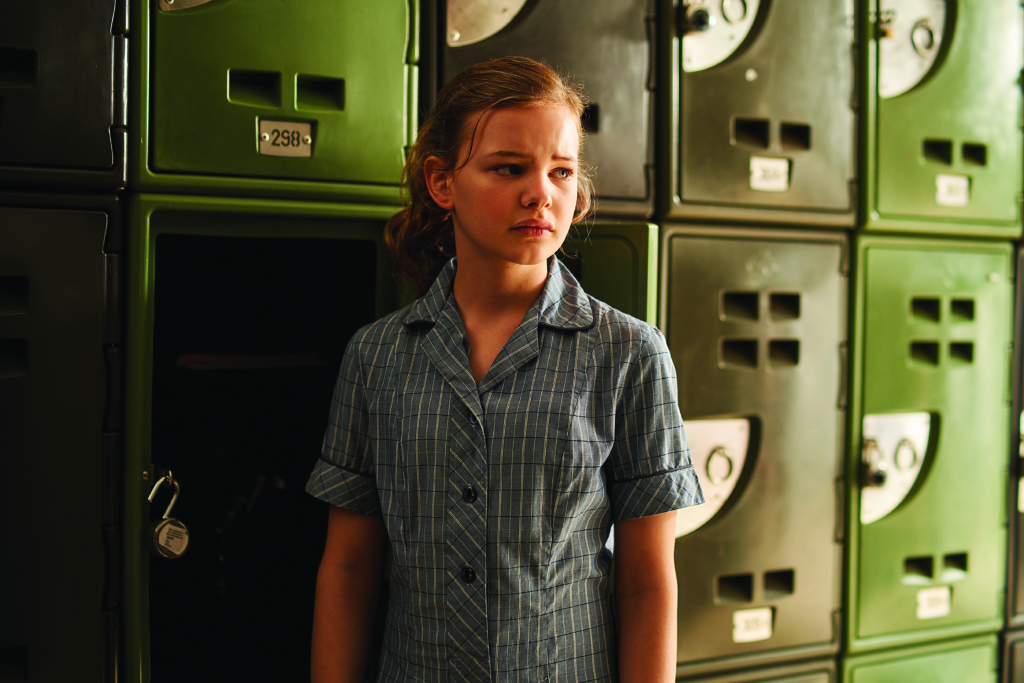
Although current calls to be (positively) seen on screen might appear to be trailblazing or progressive,[8]The ABC recently announced that its production companies must ‘demonstrate representation’ to, in the words of director of entertainment and specialist programming Michael Carrington, ‘better reflect the wonderful diversity of this nation’. It is therefore enforcing ‘diversity and inclusion commissioning guidelines’ both in front of the camera and behind it. Michael Carrington, quoted in Michael Lallo, ‘“Nothing About Us Without Us”: ABC Unveils New Diversity Rules’, The Age, 15 February 2021, <https://www.theage.com.au/culture/tv-and-radio/nothing-about-us-without-us-abc-unveils-new-diversity-rules-20210212-p5720s.html>, accessed 16 March 2021. they are in reality behind the curve. The rallying cries themselves represent a changing reality that is already happening behind the scenes – via shifting power dynamics, increased social mobility/visibility, the formation of new alliances, etc. – and proceed from the recognition that representation matters in societies continuing to undergo transitions.[9]See Stewart MacPherson & Hoi-kwok Wong (eds), Social Development and Societies in Transition, Routledge, New York and London, 2018 [1998]. Calls for representation, then, are merely an acknowledgement that other identities should be legitimated and normalised on screen, or made to reflect competing standards and evaluations in a relatively safe space.
Social transitioning
Consider the example of First Day, an award-winning 2020 children’s television series screening on ABC Me during the ongoing culture war over gender diversity, transgender youth and conversion/suppression ‘therapies’. Consisting of four twenty-odd-minute episodes primarily directed at school-age children, First Day is deceptively slight. Nonetheless, its heartfelt teenage drama is surprisingly layered, and deftly explores a range of complex themes and emotions.
While it would be a misrepresentation to speak of the LGBTQIA+ community as a single entity or necessarily even a united front,[10]As researcher Eleanor Formby has found, LGBTQIA+ and associated acronyms cover a number of disparate people who might not otherwise have anything to do with one another or share comparable experiences. Consequently, the acronym can be argued to fail to capture the pluralistic nature of contrasting sexual identities, gender attributions and LGBTQIA+ communities. See Formby, Exploring LGBT Spaces and Communities: Contrasting Identities, Belongings and Wellbeing, Routledge, New York and London, 2017. cisgender lesbian writer/director Julie Kalceff is nonetheless a trans ally and committed to exploring alternate senses of being and belonging.[11]Kalceff previously wrote and directed the multiplatform drama Starting from … Now!, a ‘lesbian love quadrangle’ set in Sydney’s inner western suburbs that screened from 2014 to 2016. The Australian web series ‘has amassed over 160 million views and has been watched in more than 230 countries’. See Benedict Brook, ‘Millions of Viewers Globally But Now the Sydney Filmmakers Behind Starting from … Now! Are Hoping to Make It Big in Australia’, News.com.au, 4 March 2016, <https://www.news.com.au/entertainment/tv/millions-of-viewers-globally-but-now-the-sydney-filmmakers-behind-starting-from–now-are-hoping-to-make-it-big-in-australia/news-story/5f54e07daa47e3e6e6e897b38523694a>; and Starting from … Now! official website,<http://www.startingfromnowtv.com/>, both accessed 16 March 2021. First Day recognises that community is a locus of identity and empowerment, and advocates cultural diversity, equity and inclusion in its own representation of reality.[12]The series not only presents the world through the eyes of a transgender girl, but it is also populated with a culturally diverse cast whose characters will become central to her experience of being seen and treated as equal.
First Day sets out to normalise and legitimise gender diversity through the eyes of the very reference group (or normativity) that calls it into question.
First Day is the story of Hannah Bradford (Evie Macdonald), a twelve-year-old girl going through three transitions simultaneously: psychological, social and physical. The young girl (like all children of her age) is about to enter a tumultuous and difficult-to-navigate adolescence. During this period of physical upheaval and emotional turmoil, Hannah will be transitioning from primary school to high school as she also undergoes the transition from her assigned-male birth gender. Hannah is therefore presenting as female for the first time in a new social setting: secondary school.
The transition to secondary school is, of course, an integral part of every child’s psychosocial development. As Erik H Erikson’s stages of development indicate, adolescence is a period of consolidation and accommodation that necessarily occurs by way of an identity crisis, or the attempt to reconcile social standards and expectations with personal needs and goals.[13]Erik H Erikson, Identity: Youth and Crisis, W.W. Norton & Company, New York, 1994 [1968], pp. 91–135. And it is primarily within regulated social environments (like school and the family) that adolescents gradually form and consolidate their identities. Young people thereby come into their own by internalising social roles, norms and values that would ideally align with personal temperaments, abilities and traits. Consequently, this crucial identity-formation stage is marked by a tension between relatively stable and fixed sources of normativity (that is, prescribed rules and roles) and unfolding normative developments (that is, psychological and physical changes) characterised by instability and confusion.
Not only is Hannah’s experience of being transgender therefore being represented on screen, but the issue of representation is also one of the show’s many themes. We quickly learn that the sex assigned to Hannah at birth never represented who she truly was: her male designation was a misrepresentation, and Hannah is finally in a position to present her inner sense of self to the outside world. Consequently, Hannah’s developing gender identity is taken as a given, since the show is more interested in her social transition. Much as psychologist Damien W Riggs has described his approach to writing about his work with trans children, First Day too starts ‘from a very simple premise: transgender young people exist, they know who they are, and they deserve all of the support and care we can give them’.[14]See Damien W Riggs, Working with Transgender Young People and their Families: A Critical Developmental Approach, Palgrave MacMillan, London, 2019, p. vii. Hannah’s gender expression and peer selection therefore constitute First Day’s primary focus: that is, the way she presents herself as female at school (through chosen name, school uniform, long hair and make-up) and is accepted by her reference groups (parents, teachers and fellow students).
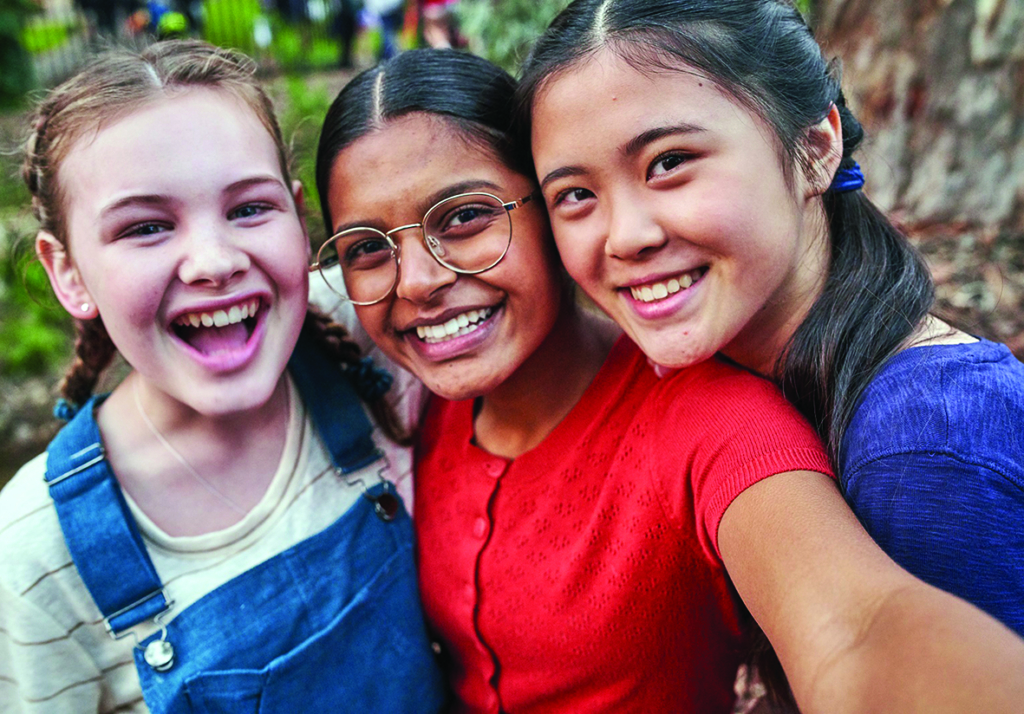
First Day strategically avoids the suggestion that Hannah is deceiving her new female friends or has befriended the other boys and girls under false pretences.[15]Political-communication scholar Thomas Billard notes that the theme of misrepresentation is ‘reflective of broader cultural discourses about transgender identity and deception circulated in media narratives […] These discourses delegitimate transgender identities by implicitly (and sometimes explicitly) suggesting that transgender identities are falsehoods that conceal the truth of “biological gender” […] in order to trick unsuspecting people about the truth of their own sexual identities and/or gender affiliations.’ Thomas Billard, ‘“Passing” and the Politics of Deception: Transgender Bodies, Cisgender Aesthetics, and the Policing of Inconspicuous Marginal Identities’, in Tony Docan-Morgan (ed.), The Palgrave Handbook of Deceptive Communication, Palgrave, New York, 2019, pp. 463–4. Happenstance ensures that her female peers select her for inclusion in the new friendship groups because their point of reference – that is, their standard of compassion for understanding and evaluating one another – reinforces each individual’s self-conception and/or gender identity/affiliation.[16]One of Hannah’s male classmates, Billy (Jackson Evans), develops a crush on her; and when Hannah’s trans status is disclosed without her consent, she is instinctively supported by a trans boy, Sarah (Jake Childs), who is anxious to come out of his own accord, and who in turn seeks Hannah’s emotional support. The children’s television series thereby becomes transgressive for a paradoxical reason: First Day sets out to normalise and legitimise gender diversity through the eyes of the very reference group (or normativity) that calls it into question.
First Day circumvents Hannah’s prior experience of gender dysphoria, or her distress and confusion about the disparity between her gender identity and biological sex. Despite Hannah’s identity crisis (fears about fitting in and/or ‘passing’ as a girl), she will continue to experience herself as authentically gendered regardless. Hannah’s sense of self is directly tied to her social sensibilities, or ways of seeing the world that (paradoxically) have their basis in socialisation. Hannah’s gender identity is therefore never in question: by the time we meet her, she is a young girl, and her gender attribution is no longer a source of anxiety or confusion. First Day also minimises any confusion or distress Hannah’s gender transition might have had (or be having) on her own family, which is presented as a model of unconditional love and support.[17]An interview with Macdonald on The Project indicates that her own family was initially resistant to the possibility that their presumed son might really be their daughter. Indeed, the assumption was that she was a gay boy because of her perceived feminine qualities; the family felt compelled to ‘teach this [camp] kid how to be a boy’ and ‘toughen this kid up’ through masculine gender expressions. See The Project, Twitter post dated 19 September 2018,<https://twitter.com/theprojecttv/status/1042348438979923969>, accessed 16 March 2021. Young viewers won’t find themselves challenged by gender-nonconforming behaviour, either.[18]Nonetheless, Kalceff surreptitiously subverts traditional gender roles or expectations within Hannah’s family. While the nuclear family is viewed as the primary social unit, her mother appears to be the main breadwinner and her (apparent) stay-at-home father is typically seen doing all the cooking and ironing. Although Hannah is seen playing violent videogames with her brother and enjoying combat sport – she is learning taekwondo – the writing emphasises her more conventionally feminine qualities such as sensitivity, thoughtfulness, gentleness and empathy. Nor will the series trouble its audience with the medical aspects of transition: Hannah’s hormone treatment (through puberty blockers) occurs off screen and between scenes, and the question of future surgery remains outside the show’s purview.
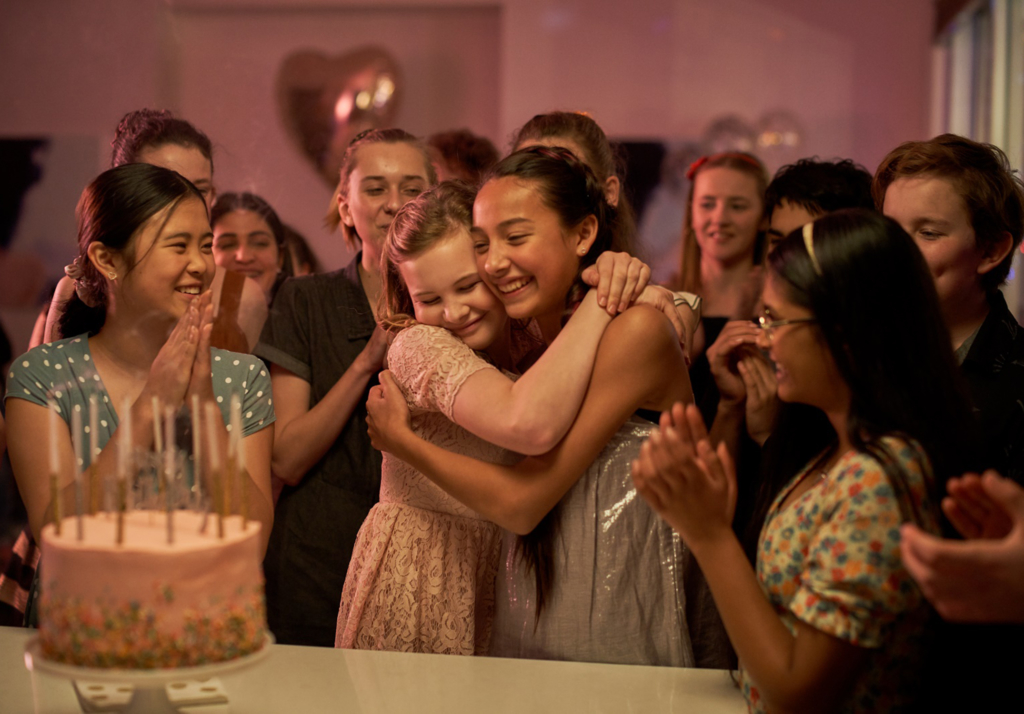
While the authenticity of Hannah’s gender identity is a given, she is nonetheless beside herself. There is still the inconvenient fact of her physiology: she is not allowed to use the girls toilets, and is inadvertently pathologised and set apart when made to use the unisex facilities in the ‘sick bay’. The mean girl from primary school has also unexpectedly followed Hannah to the new secondary school, and threatens to expose her as trans and deadname her. As with many girls of her age, body-image issues will also follow Hannah to school camp. She is self-conscious about how she will look in a bathing suit for her own reasons, however: as she anxiously asks her mother, ‘What if they can tell, if they find out?’ Hannah’s identity crisis therefore turns on the question of being ‘outed’ and ‘cast out’.
Countering hysteria
First Day, then, functions as a riposte to the moral panic that gender diversity is a social contagion spread at secondary school and on social media.[19]For an example of this kind of literature, see Abigail Shrier, Irreversible Damage: The Transgender Craze Seducing Our Daughters, Regnery Publishing, Washington, DC, 2020. While the series manages to ignore the alarmist and pathologising discourse purporting a ‘rapid onset of gender dysphoria’[20]See Lisa Littman, ‘Parent Reports of Adolescents and Young Adults Perceived to Show Signs of a Rapid Onset of Gender Dysphoria’, PLOS One, vol. 13, no. 8, August 2018,<https://journals.plos.org/plosone/article?id=10.1371/journal.pone.0202330>, accessed 16 March 2021. (or so-called ‘transtrending’[21]See Dean Moncel, ‘Transtrending: What It Means and How It Harms’, Be You Network website, 20 February 2020, <https://www.beyounetwork.org/articles/transtrending-what-it-means-and-how-it-harms>, accessed 16 March 2021.) among teenagers, viewers are advised to see First Day’s more sobering treatment as a deliberate antidote to widespread social hysteria. In 2018, for instance, Prime Minister Scott Morrison tweeted, ‘We do not need “gender whisperers” in our schools. Let kids be kids,’ and linked to a Daily Telegraph article claiming that children were falling under the bad influence of teachers misgendering ‘normal’ kids.[22]Scott Morrison, Twitter post dated 5 September 2018, <https://twitter.com/scottmorrisonmp/status/1037100764294836224>, accessed 16 March 2021. The implication was clear: the LGBTQIA+ community was coming between parents and their children, and tampering with impressionable young people. Macdonald, who is herself transgender, famously schooled the Prime Minister on national television in the aftermath, criticising Morrison’s response and requesting that he let trans children be:
My name is Evie Macdonald, I’m thirteen years old and I’m a transgender kid. And this is what I want to say to the Prime Minister: there are thousands of kids in Australia that are gender diverse, and we don’t deserve to be disrespected like that through tweets from our Prime Minister.
I know what it’s like to be on the receiving end of attitudes like this. I went to a Christian school, where I had to pretend to be a boy and spent weeks in conversion therapy. We get one childhood, and mine was stolen from me by attitudes like this.[23]Evie Macdonald, in The Project, Twitter post dated 6 September 2018, <https://twitter.com/theprojecttv/status/1037636127434334209>, accessed 16 March 2021.
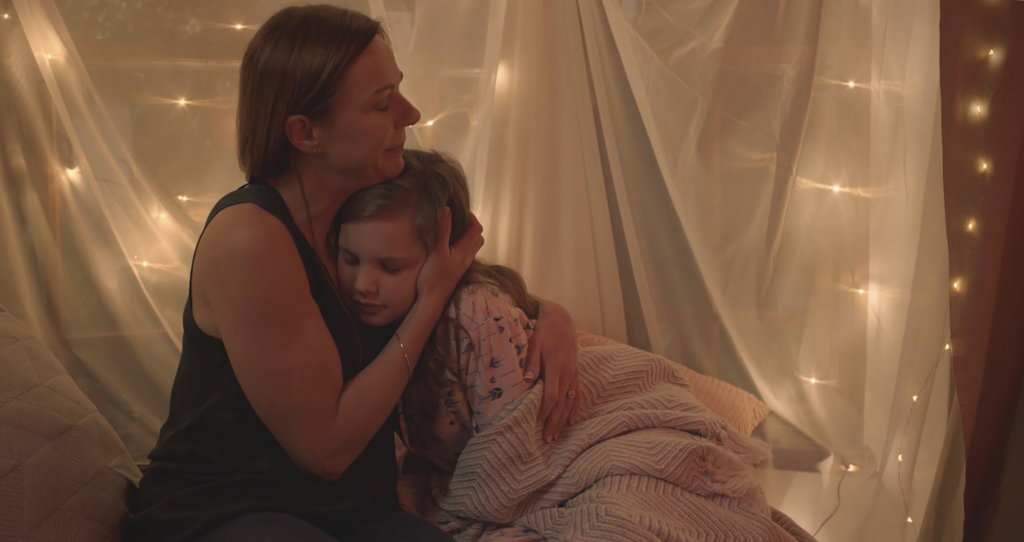
Macdonald has since been able to pursue her studies in a secular Safe Schools[24]See ‘Department Program: Safe Schools’, Department of Education and Training, State Government of Victoria,<https://www.education.vic.gov.au/about/programs/Pages/safeschools.aspx>, accessed 16 March 2021. environment – the very program Morrison was criticising for daring to reach out to marginalised and discriminated-against children. Unfortunately, Macdonald’s visibility and bravery has merely intensified her experiences of harassment and bullying at school. It was revealed a year later that her school reports now included near-daily student incident reports with various severity gradings.[25]Josh Taylor, ‘How Children Became the Target in a Rightwing Culture War over Gender’, The Guardian, 25 August 2019, <https://www.theguardian.com/society/2019/aug/24/how-children-became-the-target-in-a-rightwing-culture-war-over-gender>, accessed 16 March 2021. This alone indicates why the claim that secondary schools are some kind of breeding ground for transgender youth is a complete fabrication. Recent research cautions that transgender children’s place within the social fabric remains tenuous at best, and that they remain particularly vulnerable throughout this time.[26]As psychologists and researchers Grace Mackie, Karen Lambert and Lefteris Patlamazoglou have noted, ‘transgender people experience a significantly higher prevalence of discrimination, victimisation and peer rejection’ within secondary school environments. Consequently, they report that ‘transgender young people have been found to be most at risk of developing negative mental health outcomes’ and are ‘more likely to develop depression and anxiety and engage in suicidal behaviours’. Mackie, Lambert & Patlamazoglou, ‘The Mental Health of Transgender Young People in Secondary Schools: A Scoping Review’, School Mental Health, no. 13, March 2021, pp. 13–4. Nonetheless, The Australian upped the ante and introduced a ‘Gender’ section to the publication, seemingly for the sole purpose of relentlessly attacking and/or raising the alarm about transgender youth,[27]A number of media outlets critically commented on their coverage, including The Guardian, Media Watch and Junkee. See, for example, Taylor, op. cit.; ‘Transgender Agenda’, Media Watch, 19 August 2019, <https://www.abc.net.au/mediawatch/episodes/trans/11427782>; and Joshua Badge & Alex Garcia Marrugo, ‘Here’s Proof That Trans People Are the New Target of The Australian’s War on Queer People’, Junkee, 18 December 2019, <https://junkee.com/the-australian-trans-coverage/235282>, both accessed 16 March 2021. with transition framed as ‘castration’.[28]See Jennifer Oriel, ‘Gender Reassignment? They’re Castrating Children’, The Australian, 12 August 2019, <https://www.theaustralian.com.au/commentary/gender-reassignment-theyre-castrating-children/news-story/8e126197a78d943aa79865398d34c40b>, accessed 16 March 2021.
The social-contagion arguments made in these articles were, by this point, a long-familiar representation of a perceived threat to a ‘normal’ way of life. Homosexuality was once (and, in some quarters, still is) treated as socially contagious,[29]See Tiffany A Brakefield et al., ‘Same-sex Sexual Attraction Does Not Spread in Adolescent Social Networks’, Archives of Sexual Behavior, vol. 43, no. 2, 2014, available at <https://www.ncbi.nlm.nih.gov/pmc/articles/PMC3888648/>, accessed 16 March 2021. with the supposed moral contamination of same-sex attraction discussed as if it were transmissible through contact.[30]Warren Johansson, ‘Contagion’, in Wayne R Dynes (ed.), Encyclopedia of Homosexuality: Volume 1, Routledge, New York and London, 2016 [1990], pp. 265–6. Indeed, the right-wing opposition to same-sex marriage during the Australian postal survey included attempts to represent homosexuality and trans identity as psychologically equivalent pathogens. In one ad, the Coalition for Marriage warned that if Australians allowed contagious acceptance of same-sex relationships to spread through the legalisation of marriage, homosexuality would mutate and lead to another supposed moral stain on society – children learning to be gay at school and boys wearing dresses in classrooms.[31]See ‘Australian Ad Draws Fire for Linking Gay Marriage to Boys in Dresses’, NBC News, 31 August 2017, <https://www.nbcnews.com/feature/nbc-out/australian-ad-draws-fire-linking-gay-marriage-boys-dresses-n797491>, accessed 16 March 2021; see also Peter Quinn, ‘Hopes and Fears: Television Advertising and the Same-sex Marriage Postal Survey’, Screen Education, no. 89, 2018, pp. 80–5.
The Australian Psychological Society was so concerned by The Australian’s hysterical media coverage of these issues that it released a statement refuting social-contagion arguments while advocating for the support needs of gender-diverse people.[32]‘APS Refutes “Social Contagion” Arguments’, media release, Australian Psychological Society, 12 September 2019, <https://www.psychology.org.au/About-Us/news-and-media/Media-releases/2019/APS-Refutes-%E2%80%98Social-Contagion%E2%80%99-Arguments>, accessed 16 March 2021. The irony is that the rallying cries for more positive and supportive representations presuppose what psychologists call the ‘intergroup contact hypothesis’,[33]See Loris Vezzali & Sofia Stathi, Using Intergroup Contact to Fight Prejudice and Negative Attitudes, Routledge, New York and London, 2021. or the ‘outbreak’ of communicable senses and sensibilities. This notion recognises that normalised behaviours and attitudes are typically transmitted and maintained through social contact and relations – beginning with the emergence of cultural norms, and extending to social-justice movements subverting their presumed normativity.[34]The history of slavery and systemic racism more broadly provides a paradigmatic example of the hypothesis, particularly in terms of the way certain cultural norms and practices became increasingly socially (un)acceptable over time through the very intergroup contact and relations making them (un)acceptable in the first place. See Manfred Berg & Simon Wendt (eds), Racism in the Modern World: Historical Perspectives on Cultural Transfer and Adaptation, Berghahn Books, New York, 2014. The calls for LGBTQIA+ representation are therefore an attempt to minimise social distancing (misrepresentation, prejudice, marginalisation) by bringing previously misunderstood and devalued ‘outsiders’ into closer contact with ‘normal’ society via alternate media exposure and cultural transmissions.
Intergroup contact, bullying and acceptance
First Day announces the theme of intergroup contact from the outset and explores it in myriad ways. Indeed, the show’s very existence and transmission on ABC ME is indicative of the ‘communicable by contact’ strategy: a fortysomething cisgender lesbian writer/director has aligned herself with a young trans activist to spread the word about diversity, equity and inclusion to school-age children, teachers and parents alike. Communication is occurring between members of different social groups for the same goal: to inspire, educate and entertain. It is the contact established between characters and audience that is communicable, of course. First Day thereby sets out to spread empathy and understanding by acting as a mediator.
When Hannah and her mother, Amanda (Joanne Hunt), anxiously enter Hannah’s new secondary school, they are stepping into what is essentially a microcosm of society. Since we see Hillview High through a transgender character’s eyes, we are also made to feel Hannah’s heightened state – she is as anxious as she is excited about her social transition. Principal Nguyen (Anthony Brandon Wong) has invited them into his office to ‘offer her a place’ in society the following year, and reassures them that ‘we want Hillview to be an inclusive and safe school for everyone’. Use of the female bathrooms, however, immediately proves to be a bone of contention. Principal Nguyen states that he has to ‘keep in mind the other parents if … they find out a boy is using the girls toilets’. Hillview, then, simultaneously presents as an exclusive and potentially unsafe school for Hannah: it must be seen to represent the concerns and needs of ‘normal’ people, too.
Despite Hannah’s all-too-convincing protest – ‘I’m not a boy!’ – her entry into society remains conditional upon being excluded from a female-only space.
Exclusion from the girls toilet cubicles is a matter of school principle: majority rule. Hannah is excluded from a public single-sex space – comprised of small, partitioned private areas – because her gender identity is viewed as a potential (perceived) threat to ‘real’ girls. In bringing about this outcome, Principal Nguyen stands in for many diverse members of the adult world here, ranging from a famous British cisgender female children’s writer[35]See Abby Gardner, ‘A Complete Breakdown of the JK Rowling Transgender-comments Controversy’, Glamour, 26 January 2021, <https://www.glamour.com/story/a-complete-breakdown-of-the-jk-rowling-transgender-comments-controversy>, accessed 16 March 2021. to a relatively obscure Australian lesbian feminist philosopher.[36]See Karl Quinn, ‘“Transphobic” Website Puts Melbourne University Academics at Odds’, The Age, 25 February 2021, <https://www.theage.com.au/lifestyle/gender/transphobic-website-puts-melbourne-university-academics-at-odds-20210225-p575u4.html>, accessed 16 March 2021. Despite Hannah’s all-too-convincing protest – ‘I’m not a boy!’ – her entry into society remains conditional upon being excluded from a female-only space, and she must lie to save face (among other aspects of her wellbeing potentially at risk).
Thankfully, Hannah will go on to be accepted by a small group of other girls regardless. Another female student asks her for directions, and Olivia (Elena Liu) instinctively takes Hannah under her wing when it is apparent that she is also lost on her first day. Indeed, this inaugural contact will prove to be fateful for Hannah. During lunchtime, Hannah is seen wandering alone, and Olivia calls her over to meet her friends Natalie (Nandini Rajagopal) and Jasmine (Arwen Diamond) from primary school. Intergroup contact and social bonds are thus forged – Hannah is now one of the girls – but a question hangs over the new group of friends: will their feelings of connection and attachment persist if Hannah’s secret comes out?
Although Hannah has ‘passed’ her first test at school, she must still navigate three rites of passage: the school bully, the sleepover and the peer ‘review’ process. The first of these is Isabella (Isabel Burmester), the girl who knew Hannah as Thomas at primary school. The pair grew up together apparently on opposite sides of the gender divide, and, perhaps as a result, Isabella is clearly having trouble accepting the gender transition of the girl she calls ‘Tommy Boy’. She appears to have targeted Hannah because the new girl at school poses a threat to her own identity and place in society. Through constant prodding and reminders – in short, bullying – Isabella expects to make Hannah ‘finally come to her senses’ and return to her prior name and gender status. In doing so, she is intent on impeding Hannah’s social transition, seemingly deriving considerable pleasure from the power she possesses to reveal the ‘truth’.
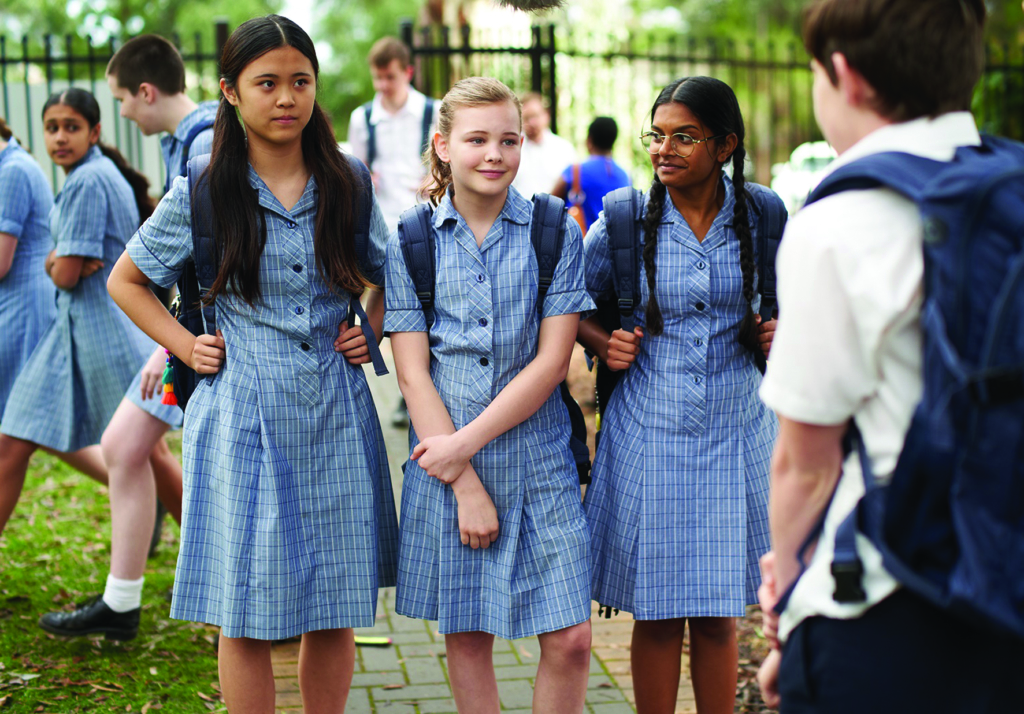
Perhaps what is most telling about Isabella is that the source of her transphobia appears to be incredulity and feelings of powerlessness. It is incomprehensible to her that the boy she knew from primary school is somehow turning into a girl right in front of her, and she refuses to believe her own eyes. First Day also strongly intimates that Isabella is the victim of physical abuse at home, and has picked an easy target so as to feel more powerful and in control at school. Kalceff is to be credited for showing such an unsympathetic character in a sympathetic light, and she even has Hannah reach out to her bully to offer emotional support. Although Isabella rebuffs Hannah’s overtures of friendship, Kalceff uses the phenomenon of bullying to make two important points: bullies are enabled by ‘innocent’ bystanders who empower them to speak for others; and a bully’s source of power is our own fears and desires. The bully represents ‘normal’ society, and their targeting of perceived differences or weaknesses is symptomatic of intergroup relations and control. Suffice to say Hannah is only able to defeat her bully when she is able to let go of the hold Isabella has on her.
When Hannah is invited to a party at Jasmine’s house, the night culminates in a sleepover for all of her female classmates. Although Hannah is allowed to go to the party, her parents tell her that she cannot sleep in someone else’s home for the night and, like the boys, will have to come back to her own home afterwards. The sleepover is, of course, a part of many children’s transition into adulthood – through such experiences, young children can (briefly) experience independence from their families as they develop closer bonds with their same-sex friends. As First Day makes clear, however, Hannah is not ready to increase her dependency on unsuspecting female friends, and the concerns of her parents – who are worried about what might happen in an uncontrolled (and potentially unsafe) social environment – must take precedence.
Nonetheless, Hannah uses the (missed) opportunity to come out to her best friend instead. Although Olivia accepts her for who she is and promises to keep her secret, she is subsequently outed on social media. Hannah watches helplessly as her peers all receive alert notifications about the sudden ‘threat’ among them. She is suddenly being seen on screens, but not on her own terms: she has lost control of her own narrative, projected self-image and media framing. Has her best friend betrayed her confidence, or has the school bully turned everyone against her? Hannah couldn’t feel more overwhelmed or isolated by the fact that everyone is suddenly looking at her through a different cultural lens. Understandably, she responds by withdrawing from school, friends and activities in a counterproductive attempt to escape inescapable thoughts and feelings. Now that ‘everyone knows’ and she can no longer trust anyone, Hannah wants to ‘start again’ at a different school. Her mother reminds her, however, that avoiding everyone is only avoiding herself; she must lead by example and be seen to accept (and trust) who she really is – a trans girl. It should come as no surprise that Olivia comes to Hannah’s rescue, and convinces her to return to school.
Although First Day doesn’t shy away from the potential fallout of this disclosure – some of Hannah’s peers, including Jasmine, do end up rejecting her and retreating into the prejudices that they’ve inherited from their parents – Kalceff accentuates the positive. She recognises that many children are naturally curious and more open-minded than adults, and uses an intergroup contact ritual (the school camp) to open channels of communication between members of different social groups.[37]One of the show’s more interesting representations is its sympathetic treatment of Jasmine. When she stops speaking to Hannah, she only ends up hurting herself: she is forced into self-exile, choosing not to support her other friends, too, and can be seen licking her wounds. First Day’s overriding messages are that self-worth is contagious, and that transphobia can be contained if people can learn to accept one another’s differences through mutual support and understanding.
Endnotes
| 1 | See Seth Gershenson, Michael Hansen & Constance A Lindsay, Teacher Diversity and Student Success: Why Racial Representation Matters in the Classroom, Harvard Education Publishing Group, Cambridge, MA, 2021. |
|---|---|
| 2 | See Laura Morgan Roberts, Anthony J Mayo & David A Thomas (eds), Race, Work, and Leadership: New Perspectives on the Black Experience, Harvard Business School Publishing Corporation, Boston, MA, 2019. |
| 3 | Luigi Curini, Willy Jou & Vincenzo Memoli, Why Policy Representation Matters: The Consequences of Ideological Proximity Between Citizens and Their Governments, Routledge, London and New York, 2015. |
| 4 | As psychologist Joanna Brooks notes, the concept of ‘lifeworld’ derives from philosophy and refers to ‘the world of lived experience inhabited by us as conscious beings, and incorporating the way in which phenomena (events, objects, emotions) appear to us in our conscious experience or everyday life’. See Brooks, ‘Learning from the “Lifeworld”’, The Psychologist, vol. 28, no. 8, 2015, p. 642. |
| 5 | See Anette Hoffmann & Esther Peeren (eds), Representation Matters: (Re)Articulating Collective Identities in a Postcolonial World, Brill, Leiden, Netherlands, 2010. |
| 6 | Social scripts are internalised representations directing patterns of thought and behaviour in specific situations. These ‘scripts’ directly relate to prescribed social roles and norms – that is, the way the same person might take on a different role (mother, daughter, sister, employee, boss, customer, etc.) and think and act differently in a given situation. |
| 7 | See, for example, Media Diversity Australia, ‘Who Gets to Tell Australian Stories?’, 26 August 2020, available at <https://apo.org.au/node/307889>; and ‘Inclusion in the Film Industry’, British Film Institute website, <https://www.bfi.org.uk/inclusion-film-industry>, both accessed 16 March 2021. |
| 8 | The ABC recently announced that its production companies must ‘demonstrate representation’ to, in the words of director of entertainment and specialist programming Michael Carrington, ‘better reflect the wonderful diversity of this nation’. It is therefore enforcing ‘diversity and inclusion commissioning guidelines’ both in front of the camera and behind it. Michael Carrington, quoted in Michael Lallo, ‘“Nothing About Us Without Us”: ABC Unveils New Diversity Rules’, The Age, 15 February 2021, <https://www.theage.com.au/culture/tv-and-radio/nothing-about-us-without-us-abc-unveils-new-diversity-rules-20210212-p5720s.html>, accessed 16 March 2021. |
| 9 | See Stewart MacPherson & Hoi-kwok Wong (eds), Social Development and Societies in Transition, Routledge, New York and London, 2018 [1998]. |
| 10 | As researcher Eleanor Formby has found, LGBTQIA+ and associated acronyms cover a number of disparate people who might not otherwise have anything to do with one another or share comparable experiences. Consequently, the acronym can be argued to fail to capture the pluralistic nature of contrasting sexual identities, gender attributions and LGBTQIA+ communities. See Formby, Exploring LGBT Spaces and Communities: Contrasting Identities, Belongings and Wellbeing, Routledge, New York and London, 2017. |
| 11 | Kalceff previously wrote and directed the multiplatform drama Starting from … Now!, a ‘lesbian love quadrangle’ set in Sydney’s inner western suburbs that screened from 2014 to 2016. The Australian web series ‘has amassed over 160 million views and has been watched in more than 230 countries’. See Benedict Brook, ‘Millions of Viewers Globally But Now the Sydney Filmmakers Behind Starting from … Now! Are Hoping to Make It Big in Australia’, News.com.au, 4 March 2016, <https://www.news.com.au/entertainment/tv/millions-of-viewers-globally-but-now-the-sydney-filmmakers-behind-starting-from–now-are-hoping-to-make-it-big-in-australia/news-story/5f54e07daa47e3e6e6e897b38523694a>; and Starting from … Now! official website,<http://www.startingfromnowtv.com/>, both accessed 16 March 2021. |
| 12 | The series not only presents the world through the eyes of a transgender girl, but it is also populated with a culturally diverse cast whose characters will become central to her experience of being seen and treated as equal. |
| 13 | Erik H Erikson, Identity: Youth and Crisis, W.W. Norton & Company, New York, 1994 [1968], pp. 91–135. |
| 14 | See Damien W Riggs, Working with Transgender Young People and their Families: A Critical Developmental Approach, Palgrave MacMillan, London, 2019, p. vii. |
| 15 | Political-communication scholar Thomas Billard notes that the theme of misrepresentation is ‘reflective of broader cultural discourses about transgender identity and deception circulated in media narratives […] These discourses delegitimate transgender identities by implicitly (and sometimes explicitly) suggesting that transgender identities are falsehoods that conceal the truth of “biological gender” […] in order to trick unsuspecting people about the truth of their own sexual identities and/or gender affiliations.’ Thomas Billard, ‘“Passing” and the Politics of Deception: Transgender Bodies, Cisgender Aesthetics, and the Policing of Inconspicuous Marginal Identities’, in Tony Docan-Morgan (ed.), The Palgrave Handbook of Deceptive Communication, Palgrave, New York, 2019, pp. 463–4. |
| 16 | One of Hannah’s male classmates, Billy (Jackson Evans), develops a crush on her; and when Hannah’s trans status is disclosed without her consent, she is instinctively supported by a trans boy, Sarah (Jake Childs), who is anxious to come out of his own accord, and who in turn seeks Hannah’s emotional support. |
| 17 | An interview with Macdonald on The Project indicates that her own family was initially resistant to the possibility that their presumed son might really be their daughter. Indeed, the assumption was that she was a gay boy because of her perceived feminine qualities; the family felt compelled to ‘teach this [camp] kid how to be a boy’ and ‘toughen this kid up’ through masculine gender expressions. See The Project, Twitter post dated 19 September 2018,<https://twitter.com/theprojecttv/status/1042348438979923969>, accessed 16 March 2021. |
| 18 | Nonetheless, Kalceff surreptitiously subverts traditional gender roles or expectations within Hannah’s family. While the nuclear family is viewed as the primary social unit, her mother appears to be the main breadwinner and her (apparent) stay-at-home father is typically seen doing all the cooking and ironing. |
| 19 | For an example of this kind of literature, see Abigail Shrier, Irreversible Damage: The Transgender Craze Seducing Our Daughters, Regnery Publishing, Washington, DC, 2020. |
| 20 | See Lisa Littman, ‘Parent Reports of Adolescents and Young Adults Perceived to Show Signs of a Rapid Onset of Gender Dysphoria’, PLOS One, vol. 13, no. 8, August 2018,<https://journals.plos.org/plosone/article?id=10.1371/journal.pone.0202330>, accessed 16 March 2021. |
| 21 | See Dean Moncel, ‘Transtrending: What It Means and How It Harms’, Be You Network website, 20 February 2020, <https://www.beyounetwork.org/articles/transtrending-what-it-means-and-how-it-harms>, accessed 16 March 2021. |
| 22 | Scott Morrison, Twitter post dated 5 September 2018, <https://twitter.com/scottmorrisonmp/status/1037100764294836224>, accessed 16 March 2021. |
| 23 | Evie Macdonald, in The Project, Twitter post dated 6 September 2018, <https://twitter.com/theprojecttv/status/1037636127434334209>, accessed 16 March 2021. |
| 24 | See ‘Department Program: Safe Schools’, Department of Education and Training, State Government of Victoria,<https://www.education.vic.gov.au/about/programs/Pages/safeschools.aspx>, accessed 16 March 2021. |
| 25 | Josh Taylor, ‘How Children Became the Target in a Rightwing Culture War over Gender’, The Guardian, 25 August 2019, <https://www.theguardian.com/society/2019/aug/24/how-children-became-the-target-in-a-rightwing-culture-war-over-gender>, accessed 16 March 2021. |
| 26 | As psychologists and researchers Grace Mackie, Karen Lambert and Lefteris Patlamazoglou have noted, ‘transgender people experience a significantly higher prevalence of discrimination, victimisation and peer rejection’ within secondary school environments. Consequently, they report that ‘transgender young people have been found to be most at risk of developing negative mental health outcomes’ and are ‘more likely to develop depression and anxiety and engage in suicidal behaviours’. Mackie, Lambert & Patlamazoglou, ‘The Mental Health of Transgender Young People in Secondary Schools: A Scoping Review’, School Mental Health, no. 13, March 2021, pp. 13–4. |
| 27 | A number of media outlets critically commented on their coverage, including The Guardian, Media Watch and Junkee. See, for example, Taylor, op. cit.; ‘Transgender Agenda’, Media Watch, 19 August 2019, <https://www.abc.net.au/mediawatch/episodes/trans/11427782>; and Joshua Badge & Alex Garcia Marrugo, ‘Here’s Proof That Trans People Are the New Target of The Australian’s War on Queer People’, Junkee, 18 December 2019, <https://junkee.com/the-australian-trans-coverage/235282>, both accessed 16 March 2021. |
| 28 | See Jennifer Oriel, ‘Gender Reassignment? They’re Castrating Children’, The Australian, 12 August 2019, <https://www.theaustralian.com.au/commentary/gender-reassignment-theyre-castrating-children/news-story/8e126197a78d943aa79865398d34c40b>, accessed 16 March 2021. |
| 29 | See Tiffany A Brakefield et al., ‘Same-sex Sexual Attraction Does Not Spread in Adolescent Social Networks’, Archives of Sexual Behavior, vol. 43, no. 2, 2014, available at <https://www.ncbi.nlm.nih.gov/pmc/articles/PMC3888648/>, accessed 16 March 2021. |
| 30 | Warren Johansson, ‘Contagion’, in Wayne R Dynes (ed.), Encyclopedia of Homosexuality: Volume 1, Routledge, New York and London, 2016 [1990], pp. 265–6. |
| 31 | See ‘Australian Ad Draws Fire for Linking Gay Marriage to Boys in Dresses’, NBC News, 31 August 2017, <https://www.nbcnews.com/feature/nbc-out/australian-ad-draws-fire-linking-gay-marriage-boys-dresses-n797491>, accessed 16 March 2021; see also Peter Quinn, ‘Hopes and Fears: Television Advertising and the Same-sex Marriage Postal Survey’, Screen Education, no. 89, 2018, pp. 80–5. |
| 32 | ‘APS Refutes “Social Contagion” Arguments’, media release, Australian Psychological Society, 12 September 2019, <https://www.psychology.org.au/About-Us/news-and-media/Media-releases/2019/APS-Refutes-%E2%80%98Social-Contagion%E2%80%99-Arguments>, accessed 16 March 2021. |
| 33 | See Loris Vezzali & Sofia Stathi, Using Intergroup Contact to Fight Prejudice and Negative Attitudes, Routledge, New York and London, 2021. |
| 34 | The history of slavery and systemic racism more broadly provides a paradigmatic example of the hypothesis, particularly in terms of the way certain cultural norms and practices became increasingly socially (un)acceptable over time through the very intergroup contact and relations making them (un)acceptable in the first place. See Manfred Berg & Simon Wendt (eds), Racism in the Modern World: Historical Perspectives on Cultural Transfer and Adaptation, Berghahn Books, New York, 2014. |
| 35 | See Abby Gardner, ‘A Complete Breakdown of the JK Rowling Transgender-comments Controversy’, Glamour, 26 January 2021, <https://www.glamour.com/story/a-complete-breakdown-of-the-jk-rowling-transgender-comments-controversy>, accessed 16 March 2021. |
| 36 | See Karl Quinn, ‘“Transphobic” Website Puts Melbourne University Academics at Odds’, The Age, 25 February 2021, <https://www.theage.com.au/lifestyle/gender/transphobic-website-puts-melbourne-university-academics-at-odds-20210225-p575u4.html>, accessed 16 March 2021. |
| 37 | One of the show’s more interesting representations is its sympathetic treatment of Jasmine. When she stops speaking to Hannah, she only ends up hurting herself: she is forced into self-exile, choosing not to support her other friends, too, and can be seen licking her wounds. |
